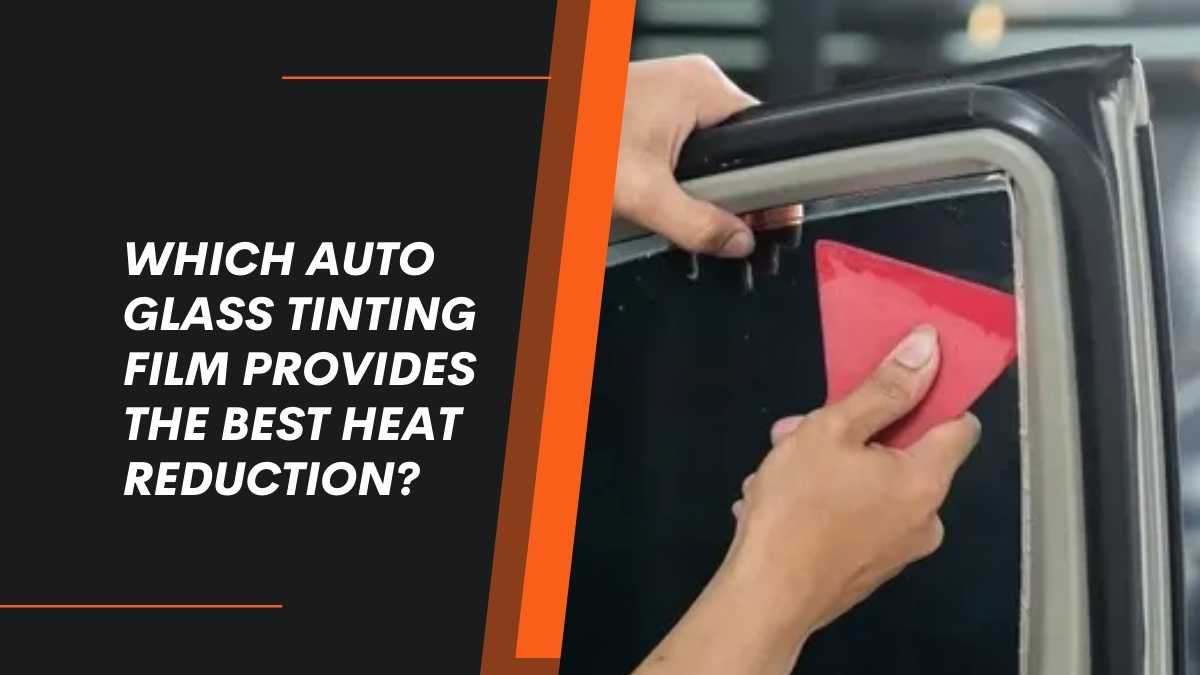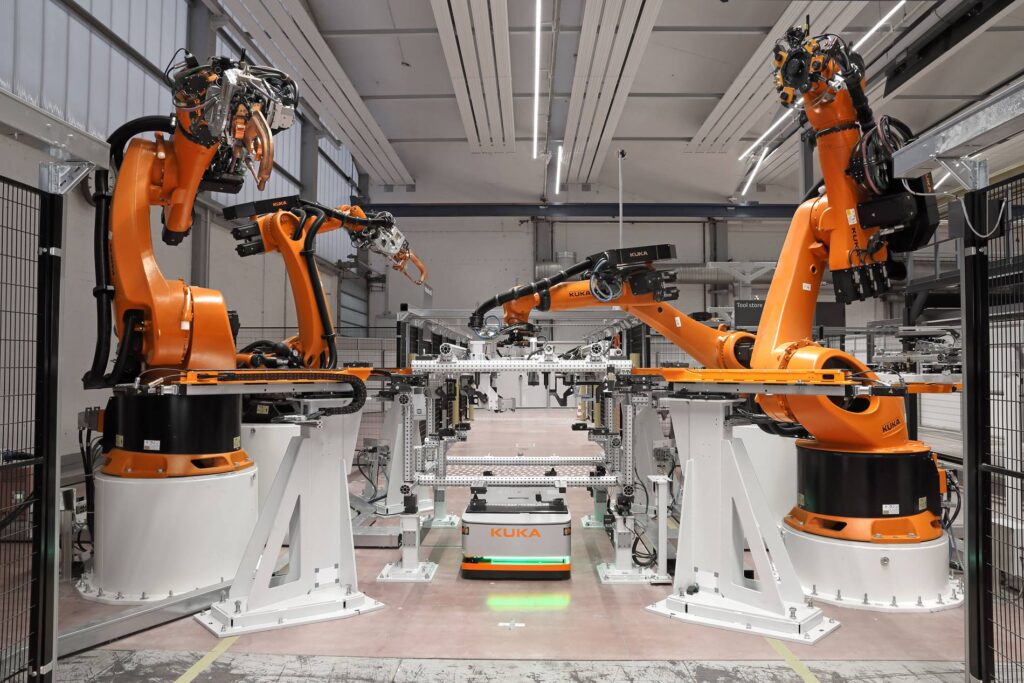If you’re tired of the heat and glare from the sun affecting your comfort while driving, you may want to consider auto glass tinting. But with so many different tinting films on the market, how do you know which one offers the best heat reduction? In this blog, we will explore the different types of auto glass tinting films available and help you understand which one can provide the most effective heat reduction for your vehicle. Whether you are looking to improve your driving comfort, protect your car’s interior, or increase privacy, the right tinting film can make a significant difference.
Understanding Heat Reduction in Auto Glass Tinting
Before we dive into the specifics of various tinting films, it’s essential to understand how heat reduction works. Heat comes from the sun’s infrared rays, which can be intense and cause your car’s interior to heat up quickly. Auto glass tinting works by blocking or reflecting these rays, preventing them from penetrating your windows. However, not all tinting films are made equal. Some films are better at blocking infrared light and heat, while others may offer more focus on aesthetics or UV protection.
How Does Heat Reduction Help?
Heat reduction in auto glass tinting offers several benefits:
- Improved Comfort: A cooler cabin makes your car more comfortable, especially during the hot summer months.
- Less Strain on Air Conditioning: By reducing the heat entering your car, your air conditioning doesn’t have to work as hard, leading to better fuel efficiency.
- Protects the Interior: Prolonged sun exposure can damage your vehicle’s upholstery, dashboard, and other interior materials. A good tint film can significantly reduce the wear and tear caused by the sun.
- Enhanced Privacy: Darker tints provide more privacy by limiting the view inside your vehicle, especially during the daytime.
Now that we have a basic understanding of how heat reduction works, let’s explore the types of auto glass tinting films available and their effectiveness in reducing heat.
Types of Auto Glass Tinting Films
There are several types of tinting films available for auto windows. Each type has its own unique properties, and some are more effective than others at heat reduction. Below, we’ll go over the most common types of films used for automotive glass tinting:
1. Dyed Film
Dyed film is one of the most affordable and commonly used types of tinting film. It uses a layer of dye to darken the windows and block out sunlight. While this type of film can provide some heat reduction, it is not as effective as other films at blocking infrared rays, which are responsible for most of the heat buildup inside your car.
How Does Dyed Film Work?
- Blocking Visible Light: Dyed film blocks visible light, which helps reduce glare, but it does not significantly block heat. It is effective at reducing the amount of sunlight that enters the vehicle, making it look cooler, but it won’t necessarily cool the interior.
- Cost-Effective: Dyed films are cheaper compared to more advanced tinting films, making them a popular choice for those on a budget.
- Limited Heat Rejection: Although dyed film can reduce heat to some extent, it does not block infrared rays effectively, meaning it may not be the best option for people looking for maximum heat reduction.
2. Metalized Film
Metalized films are more advanced than dyed films and use metal particles embedded within the film to reflect sunlight and heat away from the vehicle. This film type is better at reducing heat than dyed films and can provide additional benefits, such as increased durability and improved privacy.
How Does Metalized Film Work?
- Reflecting Heat: The metal particles in the film reflect infrared light, which helps reduce the amount of heat entering the vehicle.
- Enhanced Durability: Metalized films are generally more durable and scratch-resistant than dyed films, making them a good choice for those looking for a long-lasting option.
- More Privacy: The metalized coating also provides better privacy by reflecting light, which makes it harder for others to see into your vehicle.
Benefits of Metalized Film
- Better Heat Reduction: Metalized films are much more effective at blocking heat compared to dyed films.
- UV Protection: These films can also block up to 99% of harmful UV rays, which can protect your car’s interior from fading and cracking.
- Durability: The metalized coating makes this type of film less prone to wear and tear, providing a longer-lasting solution.
Disadvantages of Metalized Film
- Signal Interference: The metal in the film can interfere with signals, such as GPS, radio, and cell phone reception.
- Cost: Metalized films tend to be more expensive than dyed films, although they are generally more affordable than higher-end options like ceramic films.

3. Carbon Film
Carbon films are a more recent addition to the auto glass tinting market. These films are made with carbon particles that offer excellent heat reduction properties. Carbon films provide a high level of infrared heat rejection while still allowing for a high level of visible light transmission.
How Does Carbon Film Work?
- Heat Rejection: Carbon films excel at blocking infrared rays, which means they offer superior heat reduction. They can block up to 50% of the heat, making them highly effective at keeping the interior of your car cooler.
- Non-Reflective: Unlike metalized films, carbon films do not use reflective properties, which means they do not cause interference with signals.
- Enhanced Durability: Carbon films are also durable and resistant to fading, ensuring they maintain their effectiveness and appearance over time.
Benefits of Carbon Film
- Effective Heat Reduction: Carbon films offer one of the best heat rejection rates, blocking infrared heat without compromising visibility.
- No Signal Interference: As carbon films do not use metal, they do not interfere with GPS, radio, or phone signals.
- Aesthetics: Carbon films are available in a variety of shades and provide a sleek, uniform appearance without the reflective look of metalized films.
Disadvantages of Carbon Film
- Price: Carbon films are typically more expensive than dyed and metalized films, although they are still more affordable than high-end ceramic films.
4. Ceramic Film
Ceramic films are the most advanced and expensive type of tinting film available. These films use ceramic particles to provide the highest level of heat rejection. Ceramic tinting films offer excellent protection from the sun’s heat and harmful UV rays while maintaining high levels of visibility and clarity.
How Does Ceramic Film Work?
- Superior Heat Rejection: Ceramic films offer the best heat reduction by blocking a significant amount of infrared light. They can block up to 60% or more of the heat from the sun, keeping the interior of your car cooler than other types of films.
- UV Protection: Ceramic films also block 99% of harmful UV rays, helping to protect your car’s interior from sun damage, as well as your skin from potential harm.
- No Signal Interference: Like carbon films, ceramic films do not interfere with electronic signals, making them a great choice for modern vehicles with advanced technology.
Benefits of Ceramic Film
- Best Heat Reduction: Ceramic films are the most effective at reducing heat, ensuring that your car stays cool even on the hottest days.
- UV and Glare Protection: These films offer excellent protection against UV rays and reduce glare for a more comfortable driving experience.
- Clear Visibility: Ceramic films allow for clear visibility, ensuring you don’t sacrifice safety for comfort or appearance.
Disadvantages of Ceramic Film
- Cost: Ceramic films are the most expensive option on the market. However, they offer the best overall performance, making them a popular choice for those who are willing to invest in long-term benefits.
- Higher Installation Costs: Due to the advanced technology, ceramic films may also incur higher installation costs.
5. Hybrid Film
Hybrid films combine elements from both carbon and metalized films to provide a balance of heat reduction, durability, and affordability. These films offer improved heat rejection compared to dyed films while avoiding the signal interference that can occur with fully metalized films.
How Does Hybrid Film Work?
- Heat Rejection: Hybrid films use a combination of carbon and metallic materials to provide effective heat rejection. The carbon particles block infrared light, while the metal particles reflect heat.
- Balance of Features: Hybrid films offer a balanced performance, providing good heat reduction without the drawbacks of purely metalized films.
Benefits of Hybrid Film
- Cost-Effective: Hybrid films are usually more affordable than ceramic or carbon films while still offering better heat reduction than dyed or metalized films.
- Versatile: These films can be used for both heat reduction and aesthetics, providing a sleek look with improved functionality.
Disadvantages of Hybrid Film
- Less Heat Reduction than Ceramic Films: While hybrid films are a good option, they do not offer the same level of heat reduction as high-end ceramic films.
Conclusion
When it comes to choosing the best auto glass tinting film for heat reduction, ceramic films provide the highest level of infrared heat rejection, making them the most effective option. They offer exceptional protection from both heat and UV rays while maintaining clarity and not interfering with electronic signals. However, if you’re looking for a more affordable option with good heat reduction, carbon and metalized films are also great choices.
Ultimately, the best film for you will depend on your budget, priorities, and the level of heat reduction you require. If you want the best possible performance, investing in a ceramic film may be worth the higher cost. But if you need a more budget-friendly option, carbon or hybrid films can provide a good balance of performance and price.
For More Insightful Articles Related To This Topic, Feel Free To Visit: bloggingleads.






